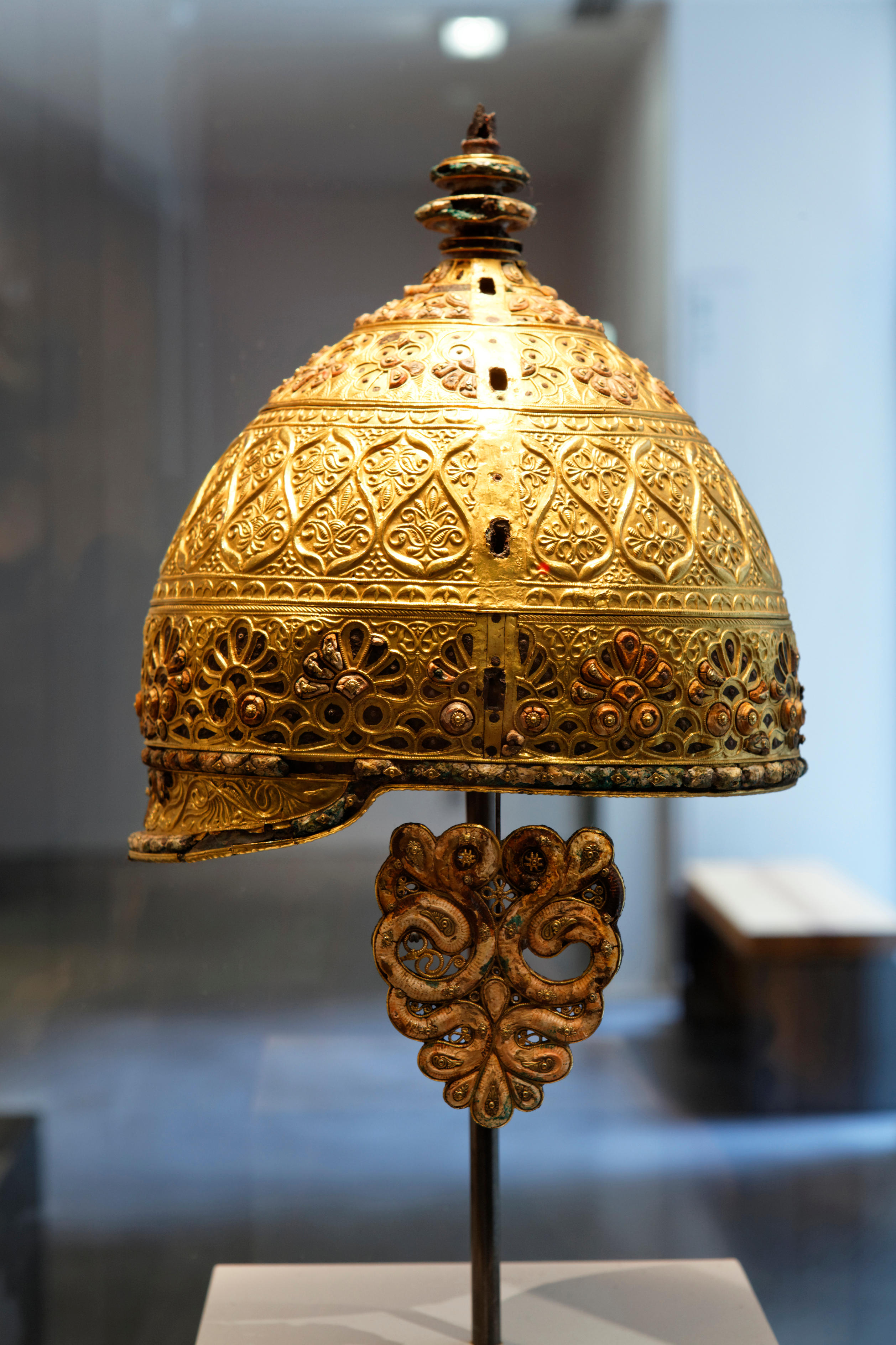Enamel is a glasslike substance used primarily to form a smooth, glossy surface on metal. It can be any of various colors and is used to decorate many kinds of articles, including metal cups, dishes, and plates. Enamel also provides a tough protective surface for bathroom fixtures, kitchen appliances, various types of industrial equipment, and many other items. Metal articles decorated or protected with enamel are called enamelware or, simply, enamels. The word enamel is often used to refer to the glasslike substance applied to ceramics. However, the correct name for this substance is glaze. The word enamel also refers to a type of paint that forms a hard, glossy surface when dry. This enamel paint can be applied over a glaze as a decoration.

Composition and application.
Enamel is composed chiefly of powdered lead-soda glass or lead-potash glass. Minerals called metallic oxides are added to enamel to produce desired colors.
Enamel is applied to metal at a temperature of about 1500 °F (816 °C), and so only metals able to withstand this temperature can be enameled. Such metals include copper, gold, and platinum. Heat causes the enamel to melt and bond with the surface of metal. Enamel can be applied by sprinkling it evenly on a metal object that has been preheated. It can also be liquefied and painted on a metal article, which is then fired (heated).
Techniques.
There are five main decorative enameling techniques. They are (1) champlevé << `shamp` luh VAY >>, (2) basse-taille << bahs TY >>, (3) cloisonné << `kloy` zuh NAY >>, (4) plique-à-jour << `pleek` ah ZHOOR >>, and (5) painting.

Champlevé
begins with the artist cutting a design into the metal by engraving or a similar method. The cutaway portion is filled with enamel. After the object has been fired, the enamel is polished down to the level of the surrounding uncut metal. The city of Limoges, France, was a famous center of champlevé enamelware from the 1100’s to the 1300’s.
Basse-taille
is a refinement of champlevé. It involves applying an almost transparent colored enamel over the raised design of a metal article, usually gold or silver. The enamel lightly colors the high parts of the design and darkens the low areas, thus creating the effect of light and shade. The method was probably developed by Italian artists in the late 1200’s.
Cloisonné
uses a design made of wire, which is bent into small, connected compartments called cloisons. The design is fastened to the surface of a metal article, and enamel is applied to it. After the article has been fired, the enamel is polished until the top of the wire form is exposed. The form outlines the design and keeps the colors from running together. The art of cloisonné developed in the Near East.
Plique-à-jour
is produced by forming an object out of wire and filling the spaces with colored enamel. Firing then bonds the enamel to the wire. Plique-à-jour produces a glittering stained-glass effect because there is no solid backing to stop the light. It originated in France, probably in the 1300’s.
Painting
involves painting a design on a metal article with enamel and then firing the article to make the design permanent. Metal objects painted with enamel are called surface-painted enamels. English enamelers of the 1700’s and early 1800’s made beautiful surface-painted enamels, particularly such items as gold snuffboxes and copper boxes.
